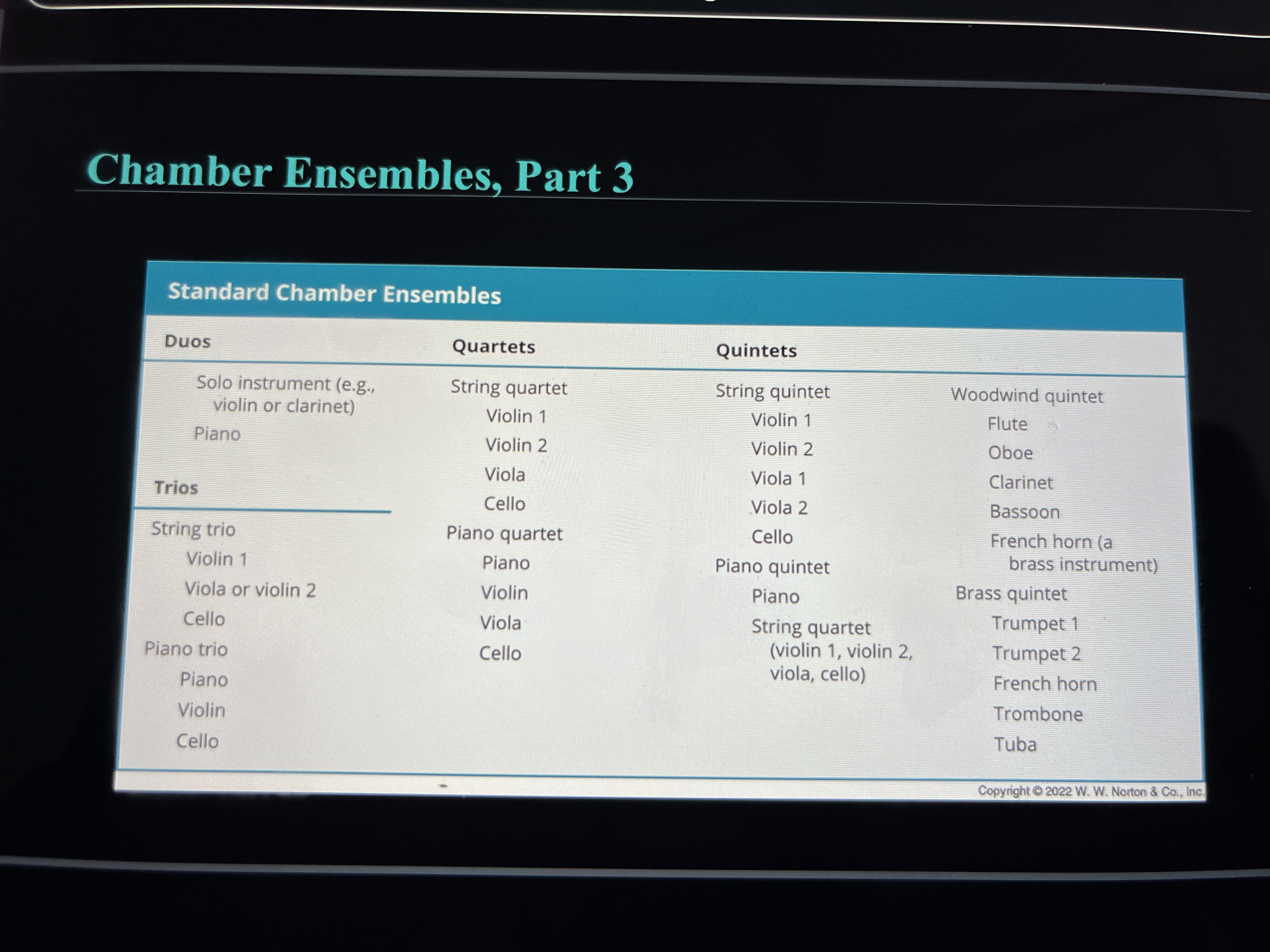Chapter 11 Musical Ensembles
1/29
There's no tags or description
Looks like no tags are added yet.
Name | Mastery | Learn | Test | Matching | Spaced |
|---|
No study sessions yet.
30 Terms
Homogenous Sound: Chorus
Large body of singers
Choir
Smaller group of singers
Voice ranges
Soprano, alto, tenor, bass SATB
a cappella (“in the chapel”)
unaccompanied singers
Smaller ensembles
Madrigal choir, chamber choir (smaller ensembles)
Chamber music
Two to twelve players, one player per part
String quartet
Two violins, viola, cello
(Chamber music) duo sonata
solo instrument with piano
piano trio, quartet and quintet
Piano and string instruments
Large groups
String quintet, sextet, septet, octet
Wind combinations
Woodwind and brass quintets
Standard chamber ensembles

(Heterogenous performing body) diverse instruments
gongs, xylophone-like instruments, and drums
Gamelan orchestra
Balinese and Javanese
Symphony orchestra: western ensemble
Strings, woodwinds, brass, and percussion
A symphony orchestra has
More than one hundred musicians
The Orchestra

Band: American institution
Winds and percussion at core
Wind, or concert band has
Forty to eighty players
Marching band
Sports events, parades
Marching band military origins
Drum majors, majorettes, flags, and rifles
Jazz bans instrumentation
Saxophones, clarinet, trumpets trombones
Jazz band cont.
percussion, piano, double bass, and electric guitar
The role of the conductor
Group leader for larger ensembles
The conductor
Interprets music, decides tempo, and dynamics
Baton
Stick used to beat standard metric patterns
Basic conducting patterns
Duple, Triple, Quadruple, and Sextuple meter
Concertmaster
First-chair violinist
Benjamin Brittens Young Persons Guide to the Orchestra was written to
Illustrate instrument timbres (polyphonic form, Baroque era)